#willem arondéus
Text

From Willem Arondéus entry on Wikipedia:
“Arondéus was a Dutch artist and author who joined the Dutch anti-Nazi resistance movement during World War II. He participated in the bombing of the Amsterdam public records office to hinder the Nazi German effort to identify Dutch Jews and others wanted by the Gestapo. Arondéus was caught and executed soon after his arrest.
His last words were: "Let It Be Known that Homosexuals Are Not Coward.”
For more information about Arondéus:

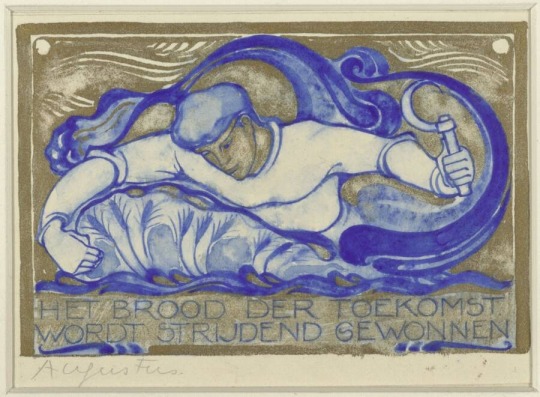
18 notes
·
View notes
Text


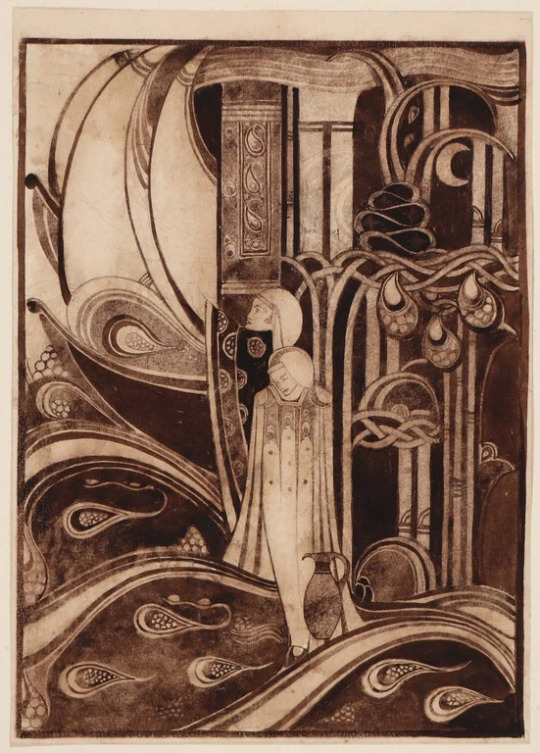
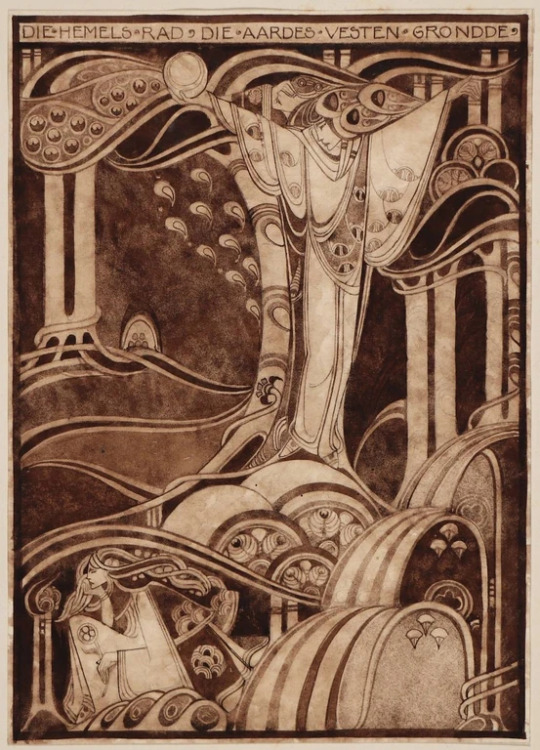
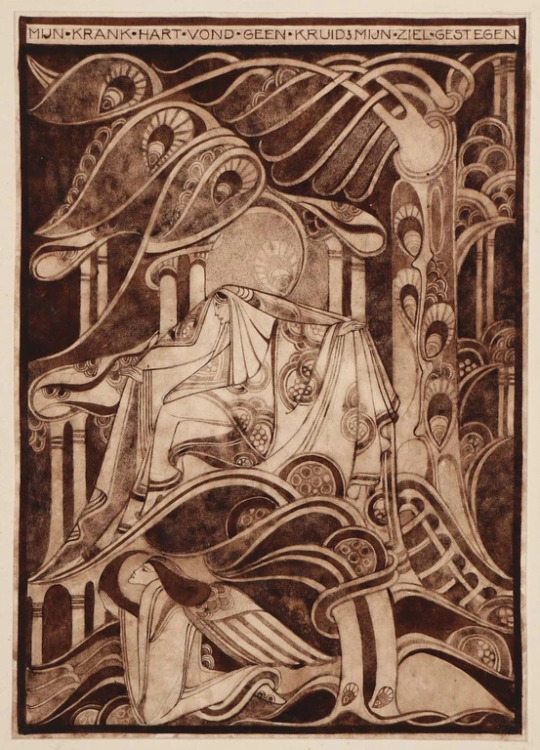
Some of Willem Arondéus's illustrations for the Rubaiyat of Omar Khayyam
2 notes
·
View notes
Text
Nieuwe podcast over verzetsheld Willem Arondéus
Nieuwe podcast over verzetsheld Willem Arondéus
Wie was Willem Arondéus en hoe is de Willem Arondéuslezing ontstaan? Beluister het antwoord op die en andere vragen in de nieuwe podcast over deze verzetsstrijder en kunstenaar.
Willem Arondéus (1894-1943) was een van de drijvende krachten achter de aanslag op het Amsterdamse bevolkingsregister in 1943. Hij was open over zijn homoseksuele geaardheid.
Een Arondéus is ‘iemand die bang is voor…
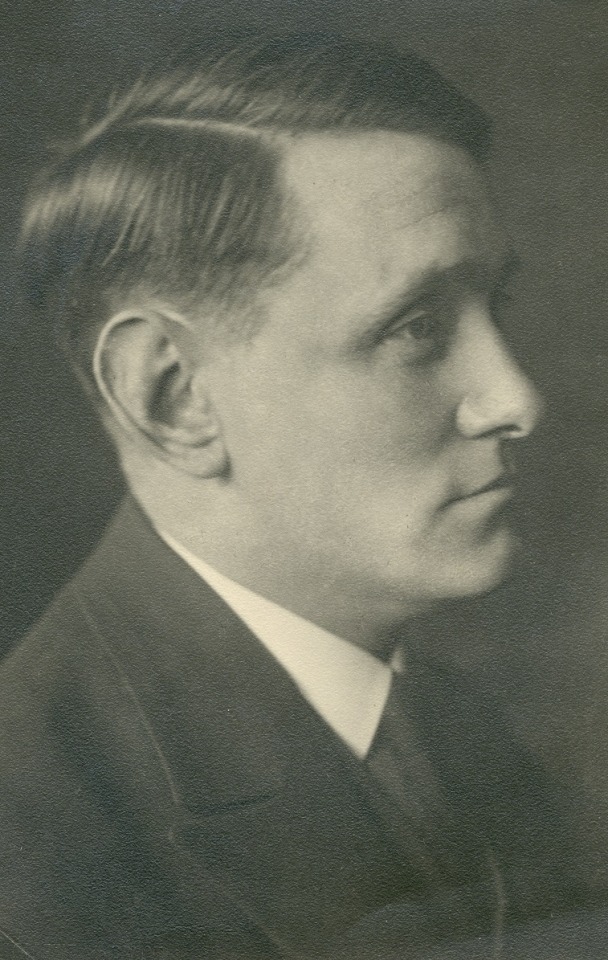
View On WordPress
0 notes
Text
Tell the people that homosexuals are not by definition weak. ~Willem Arondéus.
1 note
·
View note
Photo
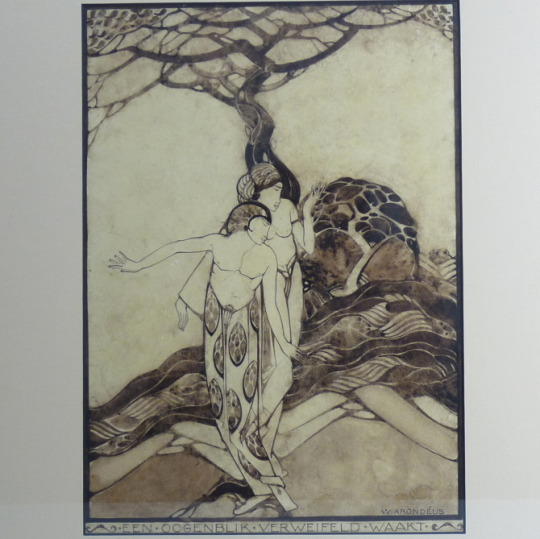
Willem Arondéus - The Netherlands,1930
79 notes
·
View notes
Text
Changing the Narrative
While confronting the Holocaust in Germany and Poland, visiting Auschwitz-Birkenau, Treblinka II, the memorial sites, I had an epiphany: the victims of the Holocaust are always labeled as victims and the perpetrators are always infamously talked about, as if they should be the main focus in our history books. These people, these “victims” were fighters and martyrs who knew about sacrifice and the possibility of death. Some survived death when they were only a few feet away from it, and not even this scare turned them away from returning to dreadful places like the Warsaw Ghetto to warn others of the fate that was awaiting them in death camps like Treblinka II. We do not give credit where credit is due. We do not talk about people like Emanuel Ringelblum, we talk about people like Heinrich Himmler. We do not talk about people like Jan Karski, we talk about people like Rudolf Höss. Because of course we have to mention the evil behind it all, but we give credit where credit is not deserved, and we see this at memorial sites, we see this at museums, we see this in poor representations of the Holocaust in film, media, in museum tours, and literature. We focus on the perpetrators and the bystanders, the people at fault, but we never focus on the fact that there was a resistance, there was hope, there were uprisings fueled by hope and the unity of persecuted peoples.
This paper is meant to ethically represent the Holocaust— the survivors, the resistance, and the rebels— those who rebelled against the odds and fought a fate decided for them by the infamous perpetrators and the bystanders. This paper is meant to highlight the stories we do not always talk about. In this paper I will be focusing on three specific groups of the many peoples targeted in the Holocaust, specifically Jews, women and children (including the unborn), and the LGBT community. This paper is a written self-reflection based on my experiences confronting the Holocaust as a survivor of assault. I want to change the narrative and focus on the stories that matter, reflect on the truth of the Holocaust, and discuss what can be done differently to respectfully and ethically commemorate the survivors and “victims” of the Holocaust. In this paper, I will argue and defend the fact that the so-called “victims” were martyrs, and the survivors were the greatest resistance of all.
THE HEAD, NOT THE TAIL
Dating back to 1930s Europe, the persecution of Jews had started much earlier than is recognized. Propaganda was used to divide communities, and successfully turned the backs of non-Jewish neighbors on their Jewish neighbors (as we see in several pogroms that occurred throughout the war— before, during, and after), however men were targeted before women and children. German Jewish men were being deported and interned far before German Jewish women were because women clearly were not even remotely viewed as a threat. In reference to Between Dignity and Despair, a historical account written by Marion Kaplan, German Jewish women were vital to the survival of German Jewish men deported and interned prior to the creation of ghettos and the decision to exterminate all Jews. Men “were forced to flee promptly” (Kaplan 24). Wives and mothers were responsible for saving their husbands from permanent internment in camps. These women learned several languages to be able to locate their husbands and fathers, and they managed to hold down the household, all at once. German Jewish women had “the burden of keeping their households and communities together.” (Kaplan 6) Men were only set free because their female relatives located them and provided them with the identification papers necessary to be released. It was their female relatives who tracked them down and released them from internment. They newly learned how to financially support their families, how to get by with the few resources they had, and they learned how to use these few resources to accomplish finding a site of refuge. We never hear these stories though, and we need to change the narrative.
The Greatest Crime. Jewish and Roma women were a persecuted minority. Jewish women more exclusively because they had the ability to procreate Jewish children, and of course, Jewish lineage is passed on through the mother. This was viewed as a political threat to the Third Reich.
At Auschwitz and Ravensbrück, Jewish and Roma women were subject to forced sterilization methods to test which methods would be most cost effective. Other “undesirables” were also exposed to forced sterilization at these camps. Upon arrival at Auschwitz-Birkenau, visibly pregnant Jewish women and Jewish women with small children were sent directly to the gas chambers to be killed. The story of Jewish women and children entering Auschwitz-Birkenau is a painful one. Dr. Josef Mengele, infamously known for conducting medical experiments on twins at Auschwitz-Birkenau, was responsible for the decision that declared that Jewish women with small children entering the camp would be gassed. His logic was that the small Jewish children had nowhere to go because all Jews were imprisoned in the camps, they could not work, and there weren’t any facilities on the camp where they could live and develop “normally”. He also claimed it would not be humane if he sent the children on their own to the “ovens” without allowing the mother to be there to witness the child’s death, so the mother and child would be sent together. We hear about Dr. Josef Mengele every time we talk about Auschwitz, but someone we never talk about who is incredibly vital to the survival of Jews in Auschwitz was Dr. Gisella Perl.
A Hero in Hell. Dr. Perl was a Hungarian gynecologist who was interned as a Jewish prisoner at Auschwitz, yet was also the head women’s doctor. Dr. Perl once spoke that the greatest crime at Auschwitz was being pregnant. She worked under Dr. Mengele and was ordered to notify him of any pregnant women that were living onsite at the camp. Dr. Mengele claimed that these women were going to be sent to a different camp to receive better nutrition. Women quickly came forward on their own, but it was soon learned these women were being experimented on and were sent thereafter to the crematoriums. Dr. Perl made it her mission to save as many women as possible while she could. She performed secret abortions on the dirty, excrement-infested floors in the barracks with her bare hands. She explained to the expecting mothers that two lives would be lost if they went through with their pregnancy because becoming pregnant in the camps meant a death sentence was awaiting them.
Fertility = Sabotage = Resistance. Interestingly enough, pregnancy was not at all uncommon on these cursed grounds where pregnancy was supposedly “not allowed”. However, brothels were common and contraceptives were clearly not available to women. Male prisoners would often seek out sexual favors in exchange of goods that would help a woman survive at the camp. There were barracks specifically used by the SS to molest and rape Jewish women. “Their actions and feelings towards Jewish women created inner conflicts for the SS officers, leading to violence against the women, who were blamed for seducing the officers” (Holland, par. 5). Age was not a restriction either. Thousands of babies were born at Auschwitz but were almost all immediately executed upon exiting the womb. Dr. Perl saved many women from instant death with the hope that they would one day have a family of their own, outside of the hell they were living in. There are only two known infants who were born in the Auschwitz-Birkenau camp and survived. A one year old weighed in at six pounds and was so weak that she could never cry, which is how she survived. She was easy to hide because no one ever heard a sound coming from her. Her mother was dying due to starvation when she gave birth to her. We never hear these stories though, and we need to change the narrative.
IDENTITY
We seldom hear about the LGBT community when we talk about the Holocaust. I could even use the word ‘never’ if I wanted to because if we are being honest, the LGBT community is not commonly included in the narrative. Members of the LGBT community faced harsh, brutal treatment in concentration camps and were treated far worse than political prisoners, Jehovah’s witnesses, the Roma, criminals, and asocials. Lesbians were subject to black triangles and labeled as “asocials” instead of receiving the pink triangle which was meant to label a person as being gay. These pink triangles assigned to gay men were commonly used as shooting targets for the SS. Compared to gay men, lesbians were hardly viewed as a threat, but they were raped and “forced” to verbally change their sexual orientation. SS men found that lesbians were the easiest to sexually convert. Gay men in Germany were forcibly castrated. Boiling water was used to literally boil off their testicles. They were called in to local police stations where they were sodomized with the ends of broken broomsticks and the torture would not end until they bled. Gay men in the Holocaust were considered the “lowest of the low” but this is often omitted from history books and Holocaust literature.
Homosexuals are not Cowards. Willem Arondéus was an openly gay, anti-fascist resistance fighter. Arondéus was one of the very first to join the Dutch resistance and his underground organization provided Jews with fake identities. In 1943, he was responsible for the bombing of a public records office that contained a catalog with the names of hundreds of thousands of Dutch people residing in Amsterdam. This was important specifically in the case of Dutch Jews because Nazis were using the catalog to look into fake identities. He planned the attack on the records office with the help of other resistance fighters, many of them also openly gay. We do not mention the fact that he dressed as a German Army captain and walked fifteen men past guards to enter the records office. We do not mention the fact that Frieda Belinfante, a classical cellist, talented conductor, and open lesbian, was one of his main resistance fighters. The rebels marched into the building, they drugged the rest of the guards, and set up the explosives. They destroyed nearly a quarter of the public records office.
We need to talk about the fact that this moment, this decision, kept thousands of Jews from being deported and identified. Unfortunately, someone within the underground organization betrayed them and turned them all in. Arondéus said he acted alone in the bombing, but the Nazis executed him and the other thirteen resistance fighters anyway. The rest of the rebels managed to flee the country. Arondéus’ last words, spoken through his lawyer, were Homosexuals are not cowards. I have to write this in bold. I have to emphasize what was meant to be emphasized by Willem Arondéus. Homosexuals are not cowards. It is a rare opportunity that we get to hear these stories of justice, resistance, rebellion, and we need to change the narrative.
THE REBELS
There is one last person I feel an intense need to talk about, and that person is Emanuel Ringelblum. I mentioned him earlier as someone we do not typically talk about and I want to end that. I feel it is important to address that there was a Jewish resistance and Emanuel Ringelblum was a huge part of it. Many people believe that Jews could have risen up against the Nazis and that they could have “actually done something”. Here is another ounce of proof that Jews resisted and rebelled and survived and actually did something.
The Archives. Ringelblum is responsible for the Oneg Shabbat Archives, better known now as Ringelblum’s Archives of the Warsaw Ghetto, which I will refer to as “the archives”. He was the inspiration behind the secret Oneg Shabbat Archives, which translates to “Sabbath pleasure”. Naming the archives “Oneg Shabbat” was technically code because Ringelblum and other archivists would meet late afternoons on the Sabbath, which is why the archives are named as such. During the day they would take in as much information as possible and write notes on what happened at night. The idea was to document the atrocities of the Nazis in the ghetto, and the archives played a huge role in memorializing those who passed on from starvation, those who were transported to Treblinka II. The archives have kept memory alive, stories, testimonials; they are living words that have survived. These stories, these documents are proof that the Holocaust happened, that there was a resistance, that people knew they might more than likely die, but they wrote anyway. If they were caught writing the archives, they would undoubtedly be killed, and they knew that. Most of the archivists who contributed to the Oneg Shabbat Archives passed away during the war, many of them deported to Treblinka II. This form of resistance is so significant and powerful because they did not resist with violence, yet these archives were a huge slap in the face for any Nazi, any bystander, anyone who was complicit with Nazi crimes because these archives proved that people knew they might die, it proved that people were not just dying because they were weaker or lesser or incapable; they were not dumb, they were not cowards. It proved that Jews were persecuted and it proved that they fought back in every way they could think of. If anything was going to survive persecution and death, it would be the truth. The Truth Meant Survival and Resistance. The one thing the Third Reich wanted to disappear more than the Jews was any memory of the Jews. Any memory of them resisting, rebelling, fighting back; any memory of them, any record of them living, any suitcase, pocket watch, or hairbrush that belonged to them. Anti-semites tried to strip Jews of everything they were, everything they had, every bit of their identity. There are two sides to the story of Jews during the Holocaust, and only two: Hope and Resistance. If Jews were so sure they were going to die, why would they try to fit their lives in little suitcases? Because they had hope. If Jews didn’t think and know they might die, they wouldn’t leave behind three milk cans worth of archives to keep their memory and stories alive. Keeping the truth alive was resistance. Ringelblum is important because he stripped the Nazis of their superficial identities. He stripped away the false importance that the Nazis gave themselves and he revealed the atrocities committed. All of the archivists revealed the cowards hiding behind the curtain, a curtain called “propaganda”. “The archive materials and Ringelblum's own written chronicles constitute the most comprehensive and valuable source of information we have” (“Emanuel Ringelblum”, 2018). Had Ringelblum not initiated the secret archives, we would not know a whole lot of what we do know now because of these documents. We probably wouldn’t know much of anything that transpired in the Warsaw Ghetto without these documents. We would not know a whole lot of what occurred in occupied-Poland. We would not know a whole lot of the truth without the Oneg Shabbat Archives. We never hear these stories though, and we need to change the narrative.
LACK OF ETHICAL REPRESENTATION AND MEMORIALIZATION
We never hear these stories because people and governments feel threatened by the truth, they feel accused, they might feel ridiculed, they might be in denial. In Germany and Poland, I witnessed the way “homosexuals” who were persecuted during the Holocaust still are not ethically represented at memorial sites, at museums, by the tour guide at Auschwitz who spoke the words “homosexual rape” back to back in the same sentence to try to describe how one prisoner at Auschwitz sodomized and simply raped another man, neither known for being gay. I witnessed the way “homosexuals” are represented by a small concrete box, hidden off in a park, with a sweet video that truly does no justice to the people who were considered the lowest of the low in concentration camps and were treated as such; treated like target practice and science experiments. I witnessed the way an information panel at the Sachsenhausen concentration camp incorrectly included all members of the LGBT community under the same word, homosexual, when there was a photo of a young transgender woman pictured clearly right in front of me, but unless you have been to these places, you would not know of these stories, and I need to change the narrative.
Neglect. I witnessed the way women were neglected at memorial sites. I witnessed the way the unborn were neglected at memorial sites. I witnessed the way it was common to hear that there were brothels at concentration camps, and I’ve read so many stories of women who saved lives in the concentration camps, yet we do not memorialize women as we do others. We categorize them under other groups of people, we steal parts of their identity that we do not want to ethically represent because “other people suffered too” and it “wasn’t just a war on women”, yet we have women being raped, being used for sexual favors, being killed upon arrival at concentration camps because being pregnant is a crime if you are considered an “undesirable”. Even German women were targets and were often forced to procreate to snowball the production of Aryan children, the opposite situation compared to that of a Jewish woman. I witnessed the way children were neglected at memorials. In the war, they were treated like adults, even though they were far from transitioning into adulthood. They were raped, beaten, abused, experimented on, and then discarded. If they were too young to work, they died in gas chambers. Some children worked in the camps at an age as early as five years old if they looked older enough, lying their way through the selection process to survive. Treated like adults then, barely memorialized now.
Knowing these stories that we do not talk about, I felt a moral obligation to address these issues and how a lot of these issues are still relevant to today. In Germany, memorial sites were neglected— blown-out speakers, waterproof lighting issues— not to mention, Nazi-era laws are still in place in the country to this day. In Poland, I met and spoke to locals who support the new Polish laws that are completely anti-semitic and are a sad example of Holocaust denial. I will not even begin to readdress what I mentioned about the tour guide at Auschwitz who referred to rape as “homosexual rape”. Ultimately, I think what made me feel uncomfortable in some of the cities I visited in Germany and Poland was the fact that there is still a lingering presence of what happened, yet people try to suppress it. It is almost as though there is no aftermath, and we are stuck in the past like it is still happening. It appears to be believed at memorial sites that so long as there is some contribution made to the memorialization of persecuted minorities that all is well, yet the memory of persecuted homosexuals is kept boxed in, closeted. There is no visible effort to protect the Memorial to the Murdered Jews of Europe. People sit on the memorial, have picnics at the memorial site, on the concrete blocks that are a part of the memorial. There are signs promoting “Hitler’s [recreated] Bunker” in Berlin that surround the area where the Memorial to the Murdered Jews of Europe is located. In regards to the educational tours, at least there is some contribution being made to spread the knowledge and awareness of what happened, but to call Auschwitz I “Auschwitz Muzeum” is unethical, uncomfortable, and desensitizing. In Oranienburg, Germany, one of the original meeting places for SS officers/commanders was repurposed as a city tax office. Their new police academy building is also repurposed SS property, and sits right in front of the Sachsenhausen concentration camp. Sachsenhausen is uncomfortably referred to as a museum as well. I understand that these are now historical sites and that there are exhibits at some of these camps, but I will never understand why we cannot just refer to them for what they were. When I visit these locations, I know exactly what happened and I do not view these places like they are museums, no matter how many exhibits there are in front of me. Real human hair is not an exhibit. Shoes that belonged to people is not an exhibit. The suitcases, the kitchenware, the glasses, the pocket watches. None of this belongs behind the wall of a glass case.
People died.
‘Museum’ is not the term used to represent a location where hundreds of thousands of real people died. Where human beings died.
CONCLUSION
The truth cannot die. These stories cannot be made to disappear. No law can change the past, alter the past, nor can it convince me to ignore the past. I have seen what denial looks like at memorial sites. I have seen what denial looks like at museums. Because of this, I cannot ignore the truth, but I can change the narrative. I can share what I have learned, I can raise awareness, I can share the stories. I know that homosexuals are not cowards. I know that lesbians, women, children, Jews, European Roma, the resistance, the archivists… are not cowards. History knows this. History has seen this. Children and newborns survived Auschwitz when they shouldn’t have. Jewish women remained fertile when they shouldn’t have. Members of the LGBT community survived when they shouldn’t have. Jews survived when they shouldn’t have. Jewish lineage was passed on when it was meant to be cut off. History knows that the “victims” were martyrs, and the survivors were the greatest resistance of all. It is vital to share the stories of people like Dr. Gisella Perl, Willem Arondéus, and Emanuel Ringelblum. Spreading awareness is vital. Making note of unethical representation and memorialization is vital, correcting it is vital.
Memory will live on, as will the stories and the journal entries. Traditions will live on, lineage will be passed on, and the rebels will never really die. We cannot forget the stories that matter, the legacies that matter, and the people who changed the course of the Holocaust. There was a resistance. There was hope. We cannot let the truth die. We must preserve the truth, identity, history. Because if we do not defend history, it will be rewritten over and over again and the truth will be at risk. The Holocaust has truly nothing to do with the perpetrators and everything to do with the difference makers. It has everything to do with the survivors and the martyrs. It has everything to do with resistance and hope.
But this is never how the story goes, and we need to change the narrative.
#holocaust#history#jewishhistory#jewishcommunity#socialjustice#socialinjustice#immigrantslivesmatter#migrantslivesmatter#blacklivesmatter#antisemitismisasin
3 notes
·
View notes
Text
Willem Arondeus - Sources
If you speak Dutch, there is a documentary on Willem entitled Het leven van Willem Arondéus 1894-1943: een documentaire, as well as a biography entitled Onbekwaam in het compromis. Willem Arondéus, kunstenaar en verzetsstrijder by Marco Entrop. Willem also kept a diary which may or may not be available somewhere.
As I mentioned in the episode, there are very few sources in English on Willem’s life and I restricted myself to the following three:
There is an entry on him in the encyclopedia Who’s Who in Gay and Lesbian History: From Antiquity to World War II. This is handy, albeit very Western-centric, and does what it says on the tin. There is also a second volume with more recent figures. Although the entries aren’t always completely accurate, this one was written by someone who spoke Dutch, who cited Dutch sources, and we’ll take what we can get.
The United States Holocaust Memorial Museum has a page on him, as does Yad Vashem. Neither of these cite anything, but are reputable organisations so I went with it.
Lastly, I also read the transcript for the oral history of Frieda Belinfante, who was Willem’s contemporary. Although it doesn’t specifically mention Willem, it provides some interesting background on the Dutch resistance movement.
If you know more about Willem, I would love to hear about it!
9 notes
·
View notes
Text

Salome by Willem Arondéus
2 notes
·
View notes
Text
Willem Arondeuslezing 2022 door Jacobine Geel
Willem Arondeuslezing 2022 door Jacobine Geel
Voorzitter van het ‘College voor de Rechten van de Mens’, theologe en programmamaker Jacobine Geel spreekt op 21 september de Willem Arondéuslezing uit in De Grote kerk in Haarlem. Iedereen is welkom bij de lezing.
Jacobine Geel zal bij de lezing ingaan op de actualiteit afgezet tegen het leven van Willem Arondéus, vanuit haar rol als voorzitter van het College voor de Rechten van de…

View On WordPress
0 notes
Photo
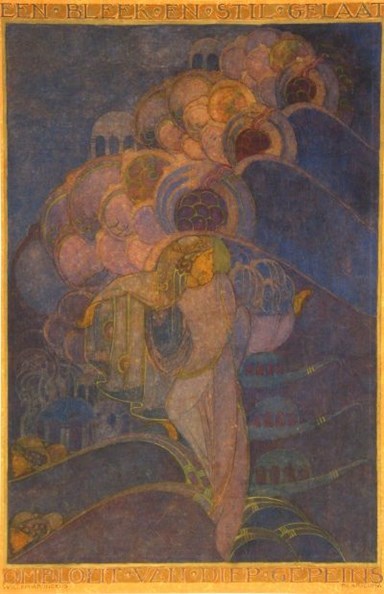
Willem Arondéus
(source)
127 notes
·
View notes
Photo
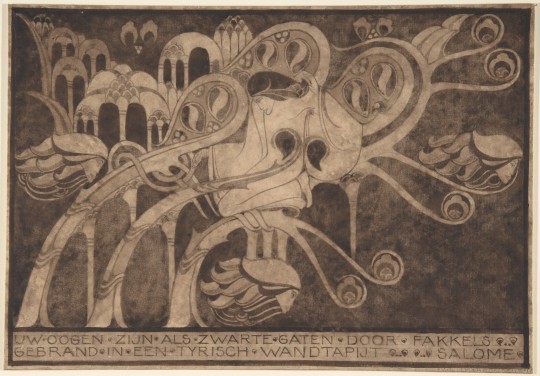
Salome, Willem Arondéus, (Dutch, Naarden 1894 – 1943 Haarlem), Brush and brown ink and brown wash, graphite, 1916, Metropolitan Museum of Art, The Elisha Whittelsey Fund, 1967. 67.794.3.
#Metropolitan Museum of Art#salome#Willem Arondéus#art#illustration#gay resistence fighter#queer history#gay artist#gay author#1916
112 notes
·
View notes
Text
New Post has been published on Haarlem updates
Nieuw bericht op https://www.haarlemupdates.nl/2019/05/06/provincie-noord-holland-krijgt-uniek-portret-van-verzetsheld-arondeus/
Provincie Noord-Holland krijgt uniek portret van verzetsheld Arondéus
De stichting Roze in Verzet schenkt een schilderij van Willem Arondéus aan de provincie Noord-Holland. Gedeputeerde Joke Geldhof en voormalig Statenlid Aukelien Jellema nemen het schilderij op 8 mei na de Willem Arondéuslezing in ontvangst. De lezing wordt gehouden door voormalig commandant der s...
#Arondéus#Grote of St. Bavokerk#Haarlem#Provincie Noord-Holland#verzetsheld#Maatschappij#Nieuws#Noord-Holland#Top
0 notes
Text
New Post has been published on Haarlem updates
Nieuw bericht op https://www.haarlemupdates.nl/2019/04/05/peter-van-uhm-houdt-arondeuslezing/
Peter van Uhm houdt Arondéuslezing
Generaal buiten dienst Peter van Uhm houdt op woensdag 8 mei de Willem Arondéuslezing. In zijn lezing gaat Van Uhm in op enkele van de laatste gedachten en woorden van Willem Arondéus. Hij zal zich de vraag stellen ‘Wat kunnen wij leren van zonder bitterheid gedenken?’ en staat stil bij ‘homo...
#Arondéuslezing#Haarlem#Peter van Uhm#Provinciale Staten van Noord-Holland#Agenda#Maatschappij#Nieuws#Noord-Holland#Top
0 notes
Photo
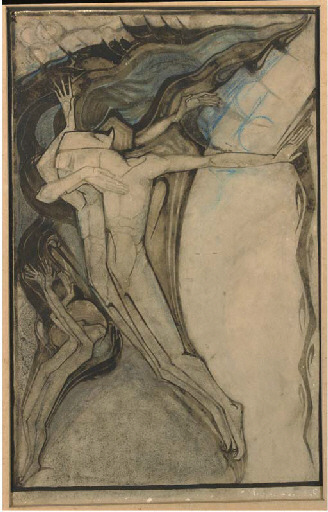
Willem Arondéus - Purgatorium,1943
40 notes
·
View notes